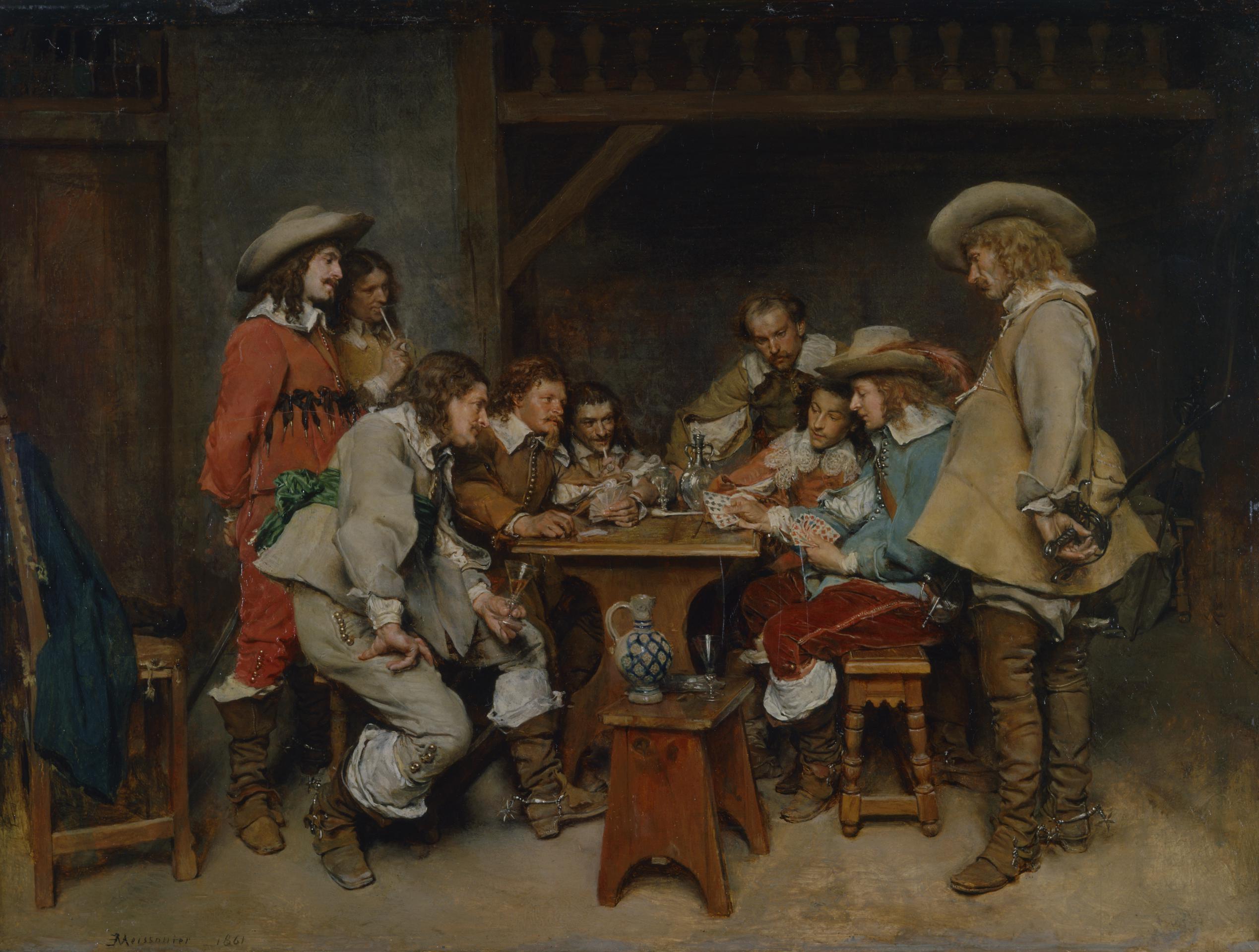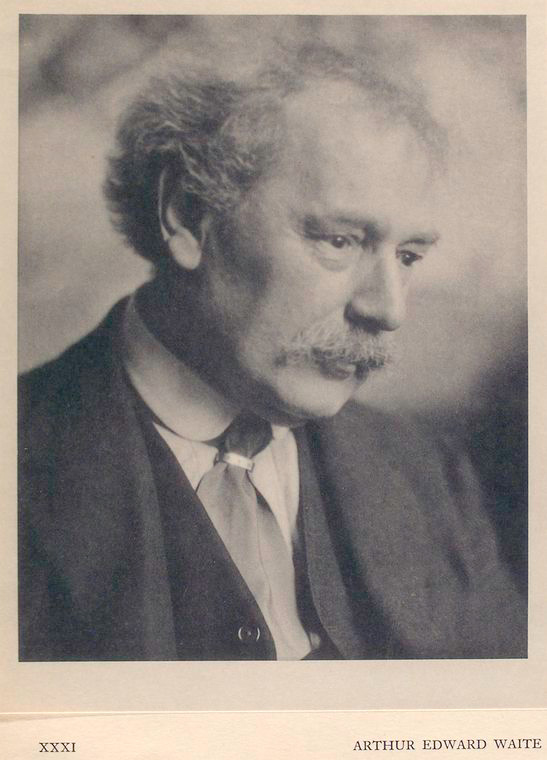|
Jean-Baptiste Alliette
"Etteilla", the pseudonym of Jean-Baptiste Alliette (1 March 1738 – 12 December 1791), was the French occultist and tarot-researcher, who was the first to develop an interpretation concept for the tarot cards and made a significant contribution to the esoteric development of the tarot cards to a wide audience (from 1783), and therefore the first professional tarot occultist known to history who made his living by card divination. Etteilla also influenced the French divination professional Marie Anne Lenormand. In the years 1783–1785 Etteilla published his work ''Manière de se récréer avec le jeu de cartes nommées tarots'' ("Way to recreate yourself with the deck of cards called tarots"), which is still considered the standard reference work of Tarot cartomancy. Etteilla published his ideas of the correspondences between the tarot, astrology, and the four classical elements and four humors, and in 1789 he published his own tarot deck, which, however, differed significantly ... [...More Info...] [...Related Items...] OR: [Wikipedia] [Google] [Baidu] |
Piquet
Piquet (; ) is an early 16th-century plain-trick card game for two players that became France's national game. David Parlett calls it a "classic game of relatively great antiquity... still one of the most skill-rewarding card games for two" but one which is now only played by "aficionados and connoisseurs." History Piquet is one of the oldest card games still being played. It is first mentioned, as ''Le Cent'', in a written reference dating to 1535, in '' Gargantua and Pantagruel'' by Rabelais. Although legend attributes the game's creation to Stephen de Vignolles, also known as La Hire, a knight in the service of Charles VII during the Hundred Years' War, it may possibly have come into France from Spain because the words "''pique''" and "''repique''", the main features of the game, are of Spanish origin. The earliest clear mention of the game – leaving aside various predecessors – is by the Spaniard, Jacques Perrache, in 1585 who refers to two unusual games, "premieres, & ... [...More Info...] [...Related Items...] OR: [Wikipedia] [Google] [Baidu] |
Cartomancy
Cartomancy is fortune-telling or divination using a deck of cards. Forms of cartomancy appeared soon after playing cards were first introduced into Europe in the 14th century. Huson, Paul (2004). ''Mystical Origins of the Tarot: From Ancient Roots to Modern Usage''. Vermont: Destiny Books. Practitioners of cartomancy are generally known as ''cartomancers'', ''card readers'', or simply ''readers''. Cartomancy using standard playing cards was the most popular form of providing fortune-telling card readings in the 18th, 19th, and 20th centuries. The standard 52-card deck is often augmented with jokers or even with the blank card found in many packaged decks. In France, the 32-card piquet stripped deck is most typically used in cartomantic readings, although the 52 card deck can also be used. (A piquet deck can be a 52-card deck with all of the 2s through the 6s removed. This leaves all of the 7s through the 10s, the face cards, and the aces.) In English-speaking countries, ... [...More Info...] [...Related Items...] OR: [Wikipedia] [Google] [Baidu] |
Tarot Readers
The tarot (, first known as '' trionfi'' and later as ''tarocchi'' or ''tarocks'') is a pack of playing cards, used from at least the mid-15th century in various parts of Europe to play card games such as Tarocchini. From their Italian roots, tarot playing cards spread to most of Europe evolving into a family of games that includes German Grosstarok and more recent games such as French Tarot and Austrian Königrufen which are still played today. In the late 18th century, French occultists began to make elaborate, but unsubstantiated, claims about their history and meaning, leading to the emergence of custom decks for use in divination via tarot card reading and cartomancy. Thus there are two distinct types of tarot pack: those used for playing games and those used for divination. However, some older patterns, such as the Tarot de Marseille, originally intended for playing card games, have also been used for cartomancy. Like the common playing cards, tarot has four suits whic ... [...More Info...] [...Related Items...] OR: [Wikipedia] [Google] [Baidu] |
18th-century Occultists
The 18th century lasted from January 1, 1701 ( MDCCI) to December 31, 1800 ( MDCCC). During the 18th century, elements of Enlightenment thinking culminated in the American, French, and Haitian Revolutions. During the century, slave trading and human trafficking expanded across the shores of the Atlantic, while declining in Russia, China, and Korea. Revolutions began to challenge the legitimacy of monarchical and aristocratic power structures, including the structures and beliefs that supported slavery. The Industrial Revolution began during mid-century, leading to radical changes in human society and the environment. Western historians have occasionally defined the 18th century otherwise for the purposes of their work. For example, the "short" 18th century may be defined as 1715–1789, denoting the period of time between the death of Louis XIV of France and the start of the French Revolution, with an emphasis on directly interconnected events. To historians who expan ... [...More Info...] [...Related Items...] OR: [Wikipedia] [Google] [Baidu] |
Eliphas Levi
Eliphaz is one of Esau's sons in the Bible. Eliphaz or Eliphas is also the given name of: * Eliphaz (Job), another person in the Bible * Eliphaz Dow (1705-1755), the first male executed in New Hampshire, for murder * Eliphaz Fay (1797–1854), fourth president of Waterville College (now called Colby College) * Eliphas Levi (1810-1875), French occultist born Alphonse Louis Constant * Eliphas Shivute (born 1974), Namibian retired footballer See also * Elifaz, Israel, a kibbutz * Eliphas Buffett House The Eliphas Buffett House is a historic house located at 159 West Rogues Path in Cold Spring Harbor, Suffolk County, New York. Description and history It consists of a two-story, three-bay-wide main structure built in about 1835, with a one-s ..., Cold Spring Harbor, New York, on the National Register of Historic Places {{given name Masculine given names ... [...More Info...] [...Related Items...] OR: [Wikipedia] [Google] [Baidu] |
Arthur Edward Waite
Arthur Edward Waite (2 October 1857 – 19 May 1942) was a British poet and scholarly mystic who wrote extensively on occult and esoteric matters, and was the co-creator of the Rider–Waite tarot deck (also called the Rider–Waite–Smith or Waite–Smith deck). As his biographer R. A. Gilbert described him, "Waite's name has survived because he was the first to attempt a systematic study of the history of Western occultism—viewed as a spiritual tradition rather than as aspects of protoscience or as the pathology of religion." He spent most of his life in or near London, connected to various publishing houses and editing a magazine, ''The Unknown World''. Early life and education Arthur Edward Waite was born on 2 October 1857 in Brooklyn, New York, United States, to unmarried parents. Waite's father, Capt. Charles F. Waite, died at sea when Arthur was very young, and his widowed mother, Emma Lovell, returned to her home country of England, where he was then raised. ... [...More Info...] [...Related Items...] OR: [Wikipedia] [Google] [Baidu] |
Classical Element
Classical elements typically refer to earth, water, air, fire, and (later) aether which were proposed to explain the nature and complexity of all matter in terms of simpler substances. Ancient cultures in Greece, Tibet, and India had similar lists which sometimes referred, in local languages, to "air" as "wind" and the fifth element as "void". These different cultures and even individual philosophers had widely varying explanations concerning their attributes and how they related to observable phenomena as well as cosmology. Sometimes these theories overlapped with mythology and were personified in deities. Some of these interpretations included atomism (the idea of very small, indivisible portions of matter), but other interpretations considered the elements to be divisible into infinitely small pieces without changing their nature. While the classification of the material world in ancient Indian, Hellenistic Egypt, and ancient Greece into Air, Earth, Fire and Water wa ... [...More Info...] [...Related Items...] OR: [Wikipedia] [Google] [Baidu] |
Minor Arcana
The Rider–Waite_Tarot.html"_;"title="King_of_Swords_card_from_the_Rider–Waite_Tarot">King_of_Swords_card_from_the_Rider–Waite_Tarot_ The_Minor_Arcana,_sometimes_Lesser_Arcana,_are_the_Suit_(cards).html" ;"title="Rider–Waite_Tarot_.html" ;"title="Rider–Waite_Tarot.html" ;"title="King of Swords card from the Rider–Waite Tarot">King of Swords card from the Rider–Waite Tarot ">Rider–Waite_Tarot.html" ;"title="King of Swords card from the Rider–Waite Tarot">King of Swords card from the Rider–Waite Tarot The Minor Arcana, sometimes Lesser Arcana, are the Suit (cards)">suit cards in a cartomantic tarot deck. Ordinary tarot cards first appeared in northern Italy in the 1440s and were designed for tarot card games. They typically have four suits each of 10 unillustrated pip cards numbered one ( ace) to ten, along with 4 court cards (face cards). Tarot games are still widely played in central and southern Europe and French Tarot is the second most popular card game in ... [...More Info...] [...Related Items...] OR: [Wikipedia] [Google] [Baidu] |
Major Arcana
The Major Arcana are the named or numbered cards in a cartomantic tarot pack, the name being originally given by occultists to the trump cards of a normal tarot pack used for playing card games. There are usually 22 such cards in a standard 78-card pack, typically numbered from 0 to 21 (in card playing packs, there is no 0, the unnumbered card is the Fool). The name is not used by tarot card game players. Prior to the 17th century, tarot cards were solely used for playing games and the Fool and 21 trumps were simply part of a standard card pack used for gaming and gambling. There may have been allegorical and cultural significance attached to them, but beyond that, the trumps originally had no mystical or magical import. With decks designed for card games ( Tarot card games), these cards serve as permanent trumps and are distinguished from the remaining cards -- the suit cards -- which are known by occultists as the Minor Arcana. The terms "Major" and "Minor Arcana" are used in ... [...More Info...] [...Related Items...] OR: [Wikipedia] [Google] [Baidu] |
Book Of Thoth
'' Book of Thoth'' is a name given to many ancient Egyptian texts supposed to have been written by Thoth, the Egyptian god of writing and knowledge. They include many texts that were claimed to exist by ancient authors and a magical book that appears in an Egyptian work of fiction. Texts that are known or claimed to exist The Egyptians stored many texts, on a wide range of subjects, in "Houses of Life", the libraries contained within temple complexes. As Thoth was the god of knowledge, many of these texts were claimed to be his work. The Egyptian historian Manetho said that Thoth wrote 36,525 books. The church father Clement of Alexandria, in the sixth book of his work ''Stromata'', mentions forty-two books used by Egyptian priests that he says contain "the whole philosophy of the Egyptians". All these books, according to Clement, were written by Hermes (a pre-existing Greek god that the Greeks likened to Thoth, claiming they were the same god, having similar qualities, e.g. bot ... [...More Info...] [...Related Items...] OR: [Wikipedia] [Google] [Baidu] |





